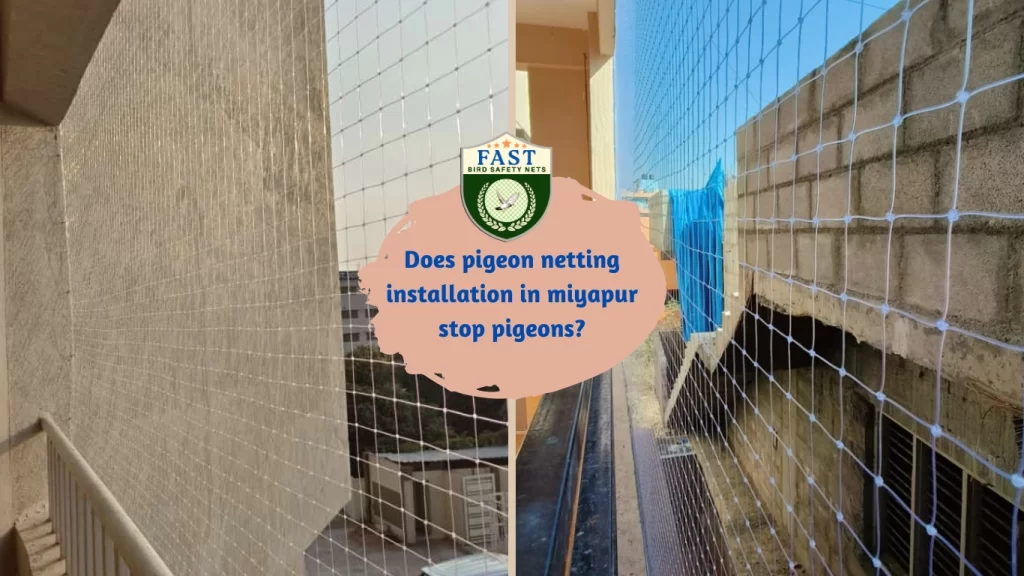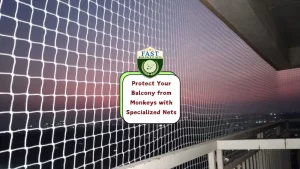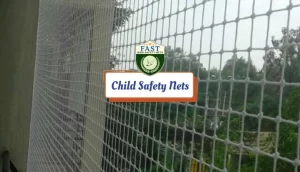Pigeons, often considered as a symbol of peace and urban wildlife, can sometimes become a nuisance when they invade residential or commercial properties in large numbers. Miyapur, like many urban areas, faces challenges related to pigeon infestations, causing concerns such as property damage, health risks, and aesthetic degradation. In response to this issue, pigeon netting installation has emerged as a popular solution in Miyapur and other regions facing similar problems. This article explores the effectiveness of pigeon netting installation in Miyapur and its role in mitigating pigeon infestations.
Understanding the Pigeon Problem in Miyapur:
Miyapur, a bustling suburb in Hyderabad, is no stranger to urban wildlife issues, including pigeon infestations. Pigeons, attracted to urban environments due to the availability of food and shelter, often roost on buildings, ledges, and other structures. While some may appreciate the presence of pigeons for their symbolism or beauty, their increasing population can lead to various problems.
Property Damage: Pigeons can cause significant damage to buildings and structures through their droppings, nesting materials, and pecking behavior. The acidic nature of pigeon droppings can corrode building materials, leading to costly repairs and maintenance.
Health Risks: Pigeon droppings contain harmful pathogens, such as bacteria, fungi, and parasites, which pose health risks to humans. Inhalation of airborne particles from dried pigeon droppings can lead to respiratory issues, while direct contact may cause skin infections or transmit diseases.
Aesthetic Degradation: Pigeon droppings not only deface buildings and structures but also create unsightly messes in public spaces. This can negatively impact the aesthetic appeal of neighborhoods, parks, and commercial areas, affecting property values and community well-being.
The Role of Pigeon Netting Installation:
Pigeon netting installation has emerged as a proactive and humane approach to address pigeon infestations in Miyapur and similar urban areas. The physical barrier created by pigeon netting, which is usually composed of sturdy materials like nylon or polyethylene, keeps pigeons from reaching their roosting and nesting locations. The installation process involves strategically placing nets over openings, ledges, balconies, and other areas where pigeons congregate, effectively denying them access to these spaces.
Prevention of Roosting and Nesting: Pigeon netting creates an effective barrier that denies pigeons access to buildings and structures where they would typically roost or nest. By eliminating these favorable habitats, pigeon netting helps deter pigeons from congregating in specific areas, reducing the likelihood of infestations.
Protection of Property: Pigeon netting acts as a protective shield against pigeon-related damage to buildings and structures. By preventing pigeons from perching or nesting on surfaces, netting helps preserve the integrity of architectural features, such as facades, ledges, and rooftops, minimizing the need for costly repairs and maintenance.
Health and Safety Benefits: Pigeon netting installation contributes to improving public health and safety by reducing exposure to harmful pathogens associated with pigeon droppings. By preventing the accumulation of droppings in and around buildings, netting helps mitigate health risks posed by airborne contaminants, safeguarding the well-being of residents, workers, and visitors.
Aesthetic Enhancement: Pigeon netting installation enhances the aesthetic appeal of properties and public spaces by eliminating unsightly pigeon-related messes. By maintaining clean and pristine environments, netting contributes to creating welcoming and attractive surroundings that enhance the quality of life for residents and visitors alike.

Case Studies and Success Stories:
Several case studies and success stories demonstrate the effectiveness of pigeon netting installation in Miyapur and other urban areas:
Residential Complexes: In residential complexes in Miyapur, pigeon netting installation has successfully prevented pigeons from roosting and nesting on balconies, ledges, and rooftop areas. Residents have reported a significant reduction in pigeon-related nuisances, such as droppings, noise, and property damage, leading to improved living conditions and satisfaction.
Commercial Buildings: Many commercial buildings in Miyapur have opted for pigeon netting installation to protect their facades, signage, and outdoor seating areas. By implementing proactive pigeon control measures, businesses have created cleaner and more inviting environments for customers and employees, enhancing their reputation and profitability.
Public Spaces: Parks, monuments, and other public spaces in Miyapur have benefited from pigeon netting installation to preserve their architectural and cultural heritage. By safeguarding structures from pigeon-related damage and contamination, netting has helped maintain these spaces for recreational and cultural activities, fostering community pride and engagement.
Conclusion:
Pigeon netting installation has proven to be an effective and humane solution for mitigating pigeon infestations in Miyapur and similar urban areas. By creating physical barriers that prevent pigeons from roosting and nesting on buildings and structures, netting helps protect property, reduce health risks, and enhance aesthetic quality. While challenges such as maintenance requirements and regulatory compliance exist, proper planning and implementation can maximize the benefits of pigeon netting installation. As Miyapur continues to address urban wildlife issues, pigeon netting remains a valuable tool in promoting harmonious coexistence between humans and pigeons while maintaining clean, safe, and attractive environments for all.






